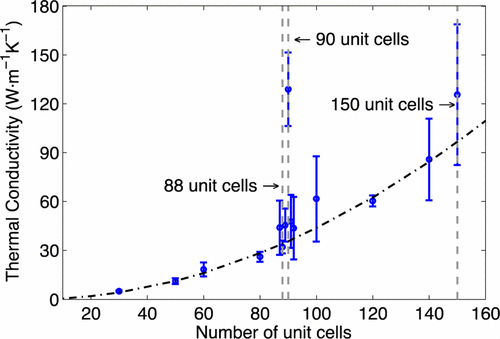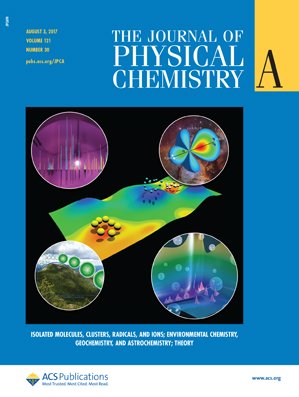Understanding Divergent Thermal Conductivity in Single Polythiophene Chains Using Green–Kubo Modal Analysis and Sonification


Abstract

We used molecular dynamics simulations and the Green–Kubo modal analysis (GKMA) method as well as sonification to study the modal contributions to thermal conductivity in individual polythiophene chains. The simulations suggest that it is possible to achieve divergent thermal conductivity in individual polythiophene chains of certain lengths, with periodic boundary conditions. Application of the GKMA method further allowed for exact pinpointing of the modes responsible for the anomalous behavior. The analysis showed that transverse vibrations in the plane of the aromatic rings at low frequencies ∼0.05 THz are primarily responsible for the divergence. Within the integration time, one mode in particular exhibits a thermal conductivity contribution greater than 100 W m–1 K–1. Further investigation showed that the divergence arises from persistent correlation between the three lowest frequency modes on chains that have exact multiples of 30 unit cells in length. Sonification of the mode heat fluxes revealed regions where the heat flux amplitude yields a somewhat sinusoidal envelope with a long period similar to the relaxation time. This characteristic in the divergent mode heat fluxes gives rise to the overall thermal conductivity divergence, which strongly supports earlier hypotheses that attribute the divergence to correlated phonon–phonon scattering/interactions as opposed to a lack of scattering/interaction among modes (e.g., infinite relaxation time/ballistic transport).
